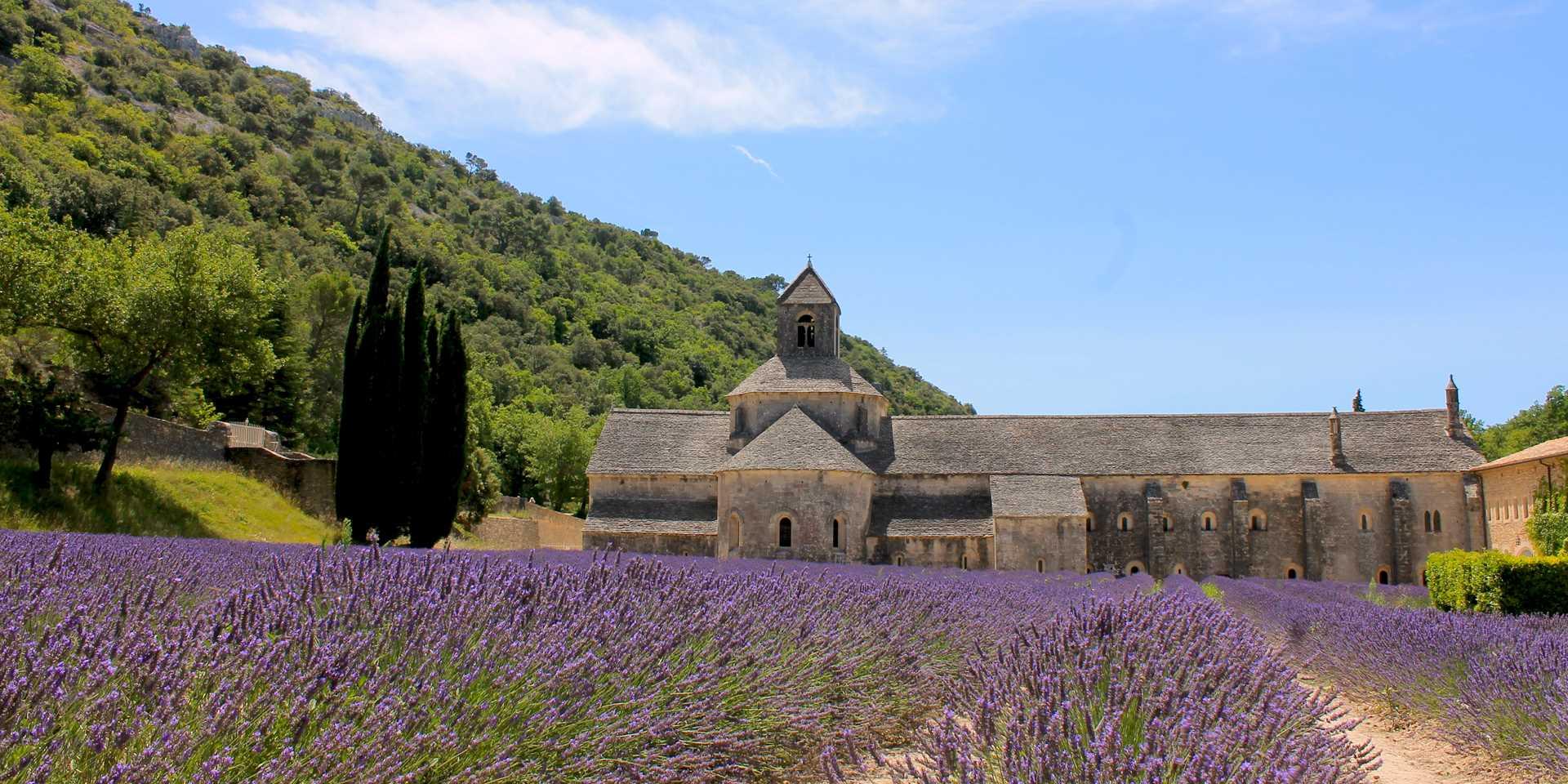A jewel of Romanesque architecture
The Sénanque Abbey was founded in 1148 by Cistercian monks from the Ardèche department under the initiative of the bishop of Cavaillon. They settled in a narrow valley measuring one kilometer long and 300 meters wide which was given to them by Guiran de Simiane in 1150. The place has everything necessary for the monks’ life: stones and wood for construction, arable land, pastures, and a stream, the Sénancole, which gave its name to the valley. It is only in 1220 that the construction of the abbey is completed. The abbey church is built in limestone in a particularly sober Romanesque style, it is devoid of representation and the stained-glass windows are simple, letting pure light through. The arcades of the cloister gallery are punctuated with columns topped with water-leaf capitals.
Thanks to donations from the Agoult Simiane de Gordes family and the Lords of Venasque, the abbey increased its domain, power, and influence from the 13th to the 14th century. At that time, it had about forty monks and possessed riches that were not compatible with the Christian poverty advocated by Saint Benedict.
In the 15th and 16th centuries, it is the great decline. Religious wars ravaged the Kingdom of France, some monks were hanged, and the monastery was burnt down by Waldensian evangelists. Only a few monks still resided in the abbey.
In 1792, there were no more monks in the Sénanque Abbey, the abbey was sold as a national asset for 28,000 francs. The new owner did everything to preserve the place from destruction during this troubled period. Anything too religious was removed from the buildings and the abbey’s coat of arms was hammered out.
In 1857, the abbot of Lérins bought the site and the Sénanque Abbey regained its original function. New buildings were built to accommodate the 72 monks who settled there. Over the following decades, the abbey was bought and sold several times, and the monks driven out or forced to leave were then allowed to reinvest in the site.
In 1969, the monks were no longer able to maintain the monastery. The abbot of Lérins decided to sign a 30-year lease with the Berliet company, which wanted to establish a cultural center and begin restoration work on the abbey. In 1988, the monastic community of Lérins became sufficiently large. Pierre Berliet allowed the monks to reinvest the Sénanque Abbey before the end of the lease. The monks live and maintain the premises thanks to their work: lavender fields and olive tree cultivation, beekeeping, visits to the abbey, hospitality, and the monastic store.
